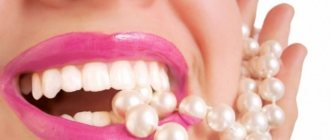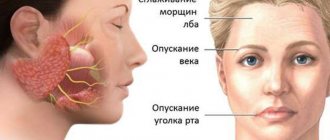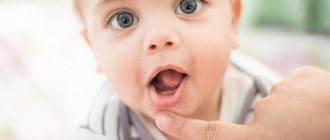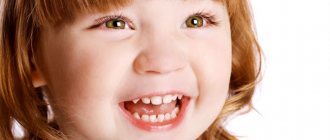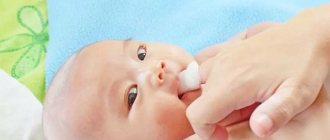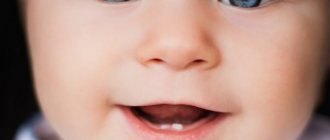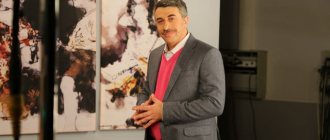Daily dental and oral care is an important part of dental health. How to properly brush teeth for adults and children, what additional hygiene products do dentists recommend using? We will talk about this in the article.
In this article
- How long should you brush your teeth?
- What brush should I use?
- Which pasta should you choose?
- We brush our teeth correctly with a regular brush
- How to brush your teeth with an electric toothbrush?
- The most common mistakes when brushing your teeth
Regular and proper brushing helps remove more than 60% of plaque and protect gum health. At the same time, dentists note that many people do not properly care for their oral cavity, which increases the risk of developing caries, periodontitis and other dental diseases. It is important not only to brush your teeth twice a day, but also to do it according to all the rules.
Practicing the technique
As in adults, when cleaning the outer and inner surfaces of the teeth, the brush is placed at an angle of 45 degrees to the tooth and sweeping movements are made from the gums to the edge of the tooth. To clean the chewing surface, the brush is positioned horizontally and moved in a circular motion. If you are afraid of overdoing it, watch the video on how to brush your teeth properly. They will explain and clearly demonstrate to you how it should be. The whole family can watch this video on how to brush your child’s teeth. In addition, your baby will also be interested in watching a cartoon about how other children brush their teeth.
Dental clinic No. 2
Parents know that it is very difficult to teach a child to brush their teeth. It's even more difficult to teach him to do it correctly. You shouldn’t torment your baby with daily tirades: “Have you brushed your teeth? Have you brushed your teeth well? Better yet, conduct a drawing lesson that explains in detail and clearly the secrets of proper teeth brushing. A good mood and consolidation of the material are guaranteed! The author of the method, dentist, candidate of medical sciences, president of the Professional Society of Dental Hygienists Svetlana Sergeevna Shevchenko tells us about such a lesson. The game technique strengthens the child’s skill in effective teeth brushing
In talking with parents and their children over the years, we have noticed that parents need help teaching their children how to brush their teeth properly. Many people forget that as a child grows, every skill he acquires comes through play. Until about 10 years of age, the child perceives the outside world through play. And therefore, we must turn the process of teaching oral hygiene into an understandable, interesting and, most importantly, effective for the child.
Therefore, we have developed a technique that helps to establish contact between the parent and the child and explain in a language understandable to the child how effective teeth cleaning occurs. For this we need a sheet of paper, watercolors, and water. If possible, take a model of your child's teeth and a regular toothbrush. This is a tool that he uses every day and is familiar to him. We remember that the toothbrush is changed every three months.
Paints, paper and a toothbrush - helpers in a dental hygiene lesson
Therefore, you should prepare a new toothbrush in advance, which you can give to him after completing the training. It is important to draw the child’s attention to the fact that the teeth of the upper and lower jaws must be cleaned with different movements. We will explain to the child that the teeth on the lower jaw should be cleaned from bottom to top. It looks a lot like grass when we draw it, from bottom to top.
If the child is in a hurry and makes only one movement, then the paper shows that complete cleansing does not occur. Therefore, we comment for the child: in one place, each tooth should be cleaned 5-10 times. And then the child clearly sees that during these 5-10 times complete painting occurs, that is, complete cleansing of plaque in the mouth. You can also pay attention to the fact that paper pellets form on watercolor paper. You can comment on this to a child this way: if you move the teeth several times, the plaque rolls off, and it’s easier for you to rinse it off with water.
How to properly brush your upper teeth?
Next, please note that we should always brush the teeth in the upper jaw from top to bottom - from red to white, also with vertical cleaning movements. To make this clear and visible to us, we ask the child to depict the sky, clouds - again, from top to bottom. And we pay attention, we repeat, that in one place it is necessary to make several movements - 5 or 10, then the cleansing in the mouth will be effective, and on paper we see that the palate is completely painted over. During such training, the child becomes very interested in the desire to paint the correct area of the sky, and thus, unnoticed by him, his hand gets used to making the necessary movements, which he will then repeat in the oral cavity.
How to properly clean the chewing surface?
It should be recalled that the chewing surface of the teeth has different grooves in which food debris easily accumulates. And in order to properly clean these surfaces, we will teach him to make circular movements by taking yellow paint and asking him to depict the sun in the drawing, making 5-10 circular movements. In the future we will talk about such movements as the “sun movement”.
How much toothpaste should you use when brushing your teeth?
It is important to draw the child's attention to the fact that when brushing his teeth he will use a brush and toothpaste. How much paste will be enough to clean? We will ask him to squeeze a pea onto our drawing. Firstly, the amount of toothpaste is clearly visible. Well, ask the game to have an impressive moment, draw a cloud of fragrant, delicious toothpaste with your finger.
Strengthening the skill of proper brushing of teeth in a child
After you have completed the drawing, you must follow the pedagogy stage in the methodology - consolidating the acquired knowledge. That is, it needs to be repeated in the oral cavity. To do this, select a toothbrush that is sized according to the child’s age. Prepare in advance and buy a brush at the pharmacy that is appropriate for your child’s age. After opening a new toothbrush, ask him to squeeze a pea of toothpaste onto the brush and in the bathroom in front of the mirror, repeat the movements on the lower jaw from bottom to top, imitating the grass pattern that you recently depicted with him.
Remind him to make 5-10 movements on the lower jaw. Please note that on the inside it should repeat the movements of the green grass. The child then understands what correct movements you want to see from him. Remind him that on the upper jaw it is necessary to reach the lateral teeth with a brush and make movements similar to the pattern of the sky - from top to bottom, making 5 or 10 movements in one place. Repeat this from the inside, repeating that the movements should be vertical from top to bottom, as if we were drawing the sky of the upper jaw.
Then explain to him that the side teeth have a chewing surface, and only with the “sun” motion can you thoroughly clean out all the remnants of food and plaque on these teeth. Your child will carry out these movements with pleasure and understanding and remember the bright drawing that you and he made together while undergoing training.
Be sure to teach him how to rinse his mouth properly by rinsing the toothpaste. Remind him that in the oral cavity, the tongue must also be cleaned with a toothbrush and made several cleansing movements, removing both the remaining toothpaste and possible food debris. After thoroughly rinsing your mouth of toothpaste with a feeling of fresh breath, your child will probably smile and thank you for such an interesting learning experience.
How to teach a child to brush his teeth voluntarily?
When you start brushing your child's teeth, tell him how beneficial this procedure is for his teeth. If the child’s fear or reluctance does not go away, look at the pictures together on how to brush your teeth correctly. Visual examples convince better than words. While brushing, to prevent your child from being capricious, you can play the game “Who can brush their teeth the longest” with him. If the game becomes truly exciting, the child himself will wait for the time when he needs to brush his teeth. Children begin to learn hygiene procedures on their own at the age of two. Using your own example, explain and show how to brush your teeth correctly. Take advantage of the fact that at this age children are happy to repeat the movements of adults and imitate them. Also, do not forget that you need to brush your child’s teeth in the morning and in the evening.
The dentist is not a scary beast!
When is the best time to meet with a dentist? On average, babies' first teeth begin to appear from 6 to 8 months, and by the age of one year their number can reach up to 6 teeth. This means it’s time to meet a doctor. The first meeting is very important, so try to find a specialist who knows how to find a common language with children, and then the good doctor will really become like that. In addition to checking the condition of the oral cavity and the health of existing teeth, the dentist will educate parents about what kind of nutrition will have a beneficial effect on tooth growth.
Evil caries
Your child's dental health can be at risk from tooth decay, even if he or she is only 2 years old. The cause may be poor nutrition, improper or absent oral care of the child. You shouldn’t sit back and wait for diseased baby teeth to fall out and healthy ones to grow in. Tooth decay can affect the condition of future molars. Review your baby's diet; perhaps he lacks calcium-rich foods. Monitor oral care, or even better, do it together with your baby. By doing this, you will not only teach him to brush his teeth, but also make this process enjoyable.
Forming the correct bite
According to research, breastfed children are less likely to subsequently encounter problems with malocclusion than bottle-fed children. What can mom do? Use slow flow nipples. The baby will have to strain his facial and jaw muscles, and this will help develop them and form the correct bite. Also, do not delay the introduction of solid foods and allow the baby to keep his hands in his mouth. And when your baby reaches 9 months, try weaning him off the pacifier.
How long should you brush your teeth?
It is enough to brush baby teeth for 2 – 3 minutes. This is the norm for both adults and children. If your child can’t stand it for that long, try to turn brushing your teeth into a game, as described above, since simple coaxing is unlikely to help. In order for the child to have only pleasant impressions of the procedure, try doing it, say, to children's songs. Also try to explain how many times a day you should brush your teeth. Try to cultivate in your child the desire to take care of their teeth; in the future, this will undoubtedly have a beneficial effect not only on their beauty, but also on their health.
Regular and thorough brushing of children's teeth is an important point in the prevention of caries and its complications. But don’t forget about professional hygienic cleaning to avoid bad breath in children, yellow plaque and tartar, which cannot be removed on your own. In addition, professional hygiene helps the effectiveness of wearing braces by teenagers, diagnosing childhood caries at the initial stage of its development, which is also important for the health of baby teeth.
What cleaning technique should I use?
There are several basic techniques for brushing teeth, and the choice of technique depends on the age of the child and whether the child brushes on his own or his parents do it for him. It is useless to teach a child complex “adult” techniques for brushing teeth, since he does not have enough manipulative and tactile skills due to his young age. This will only make him irritated and unwilling to “cooperate.”
PHOTO: The best prevention of early caries in children is careful oral hygiene. The child is drawn into the game with great pleasure. It is worth using and brushing your teeth in a playful manner, using any situations for this, for example, in the bathroom while bathing.
Arouse interest
What to do when your baby flatly refuses to brush his teeth? It is more productive not to force children, but to interest them.
Parents' allies will be kindness, patience and perseverance: according to psychologists, it takes several months to develop a habit.
Give your child the right to choose any brush from the range suitable for his age. Superheroes and princesses, fairy-tale animals and characters from animated series - the choice is widest.
Kids love to imitate adults. Show your child an example and tell him why you need to keep your teeth in order. Involve older children in the competition to see who can cope better with the cleansing procedure.
It is useful to attend a special lesson with a pediatric dentist on hygiene issues.
The short video develops the idea that game-based learning is especially effective. Organizing a family clean teeth celebration is a good idea that can be borrowed from the video.
A special monthly wall calendar will remind your child of the need to maintain hygiene. For each date, there are two pictures that indicate morning and evening procedures. Having completed the hygienic operation, the baby paints over one image after another until the calendar runs out. When regular cleaning becomes a habit, the calendar can be considered to have served its purpose.
If there is a persistent reluctance to carry out hygiene procedures, educational and educational cartoons will help. The funny rabbit-dentist, the hero of the video, invites children on an exciting journey through different countries.
How to choose a toothbrush
Not only is the correct cleaning technique important, but also the brush. When choosing a product, you need to navigate their diversity:
- Very soft brushes designed for children. This type is chosen for children over 5 years old, as well as people diagnosed with periodontitis. It is recommended that children under 2 years old brush their teeth with special silicone fingertips.
- Medium bristles hardness. Recommended for teenagers over 12 years old.
- Hard brushes. Can only be used after consulting a doctor. Excessive hardness causes enamel destruction. Recommended for coffee lovers, smokers, and people with increased stone formation. But such brushes can only be used by those who have strong enamel and a healthy oral cavity.
- Very hard brush. We are talking about brushes used in cases where bridges and braces are installed.
- Electric brushes. According to dentists, they are best for removing soft deposits. In addition, there is no need to make additional movements during cleaning. It is enough to slowly move the device over the surface of the teeth, and the electric brush will do the rest itself. But if the gum tissue is weak, then such a procedure can cause injury.
- Ultrasonic brushes. Does not damage gums. Approved for use for diseases of the oral cavity, installed braces or implants. Ultrasound cleans exposed surfaces and removes bacteria at a depth of 5 mm under the gums.
- Working head size. Preference should be given to products with small working heads. In this way, soft tissue injury can be prevented.
Pay attention to the hardness level markings. Responsible manufacturers always indicate it on the packaging:
- sensitive – very soft brushes;
- soft – soft;
- medium – brushes with medium hardness;
- hard – very hard;
- extra-hard – special brushes that remove large amounts of plaque and are intended for people with installed restoration structures.
An important rule: you need to change the brush every 3 months.
At one year old
When the child turned one year old, the family already had some experience in cleaning with a silicone nozzle. The number of teeth has also increased - usually there are 5-8.
It's time to buy your first toothbrush. There are certain requirements for it:
- small head;
- soft synthetic bristles, short and thin;
- a wide, short handle with a non-slip surface, preferably with a limiter;
- Made of soft rubber that does not injure gums.
Clean your teeth by moistening the brush with chilled boiled water. For babies whose age is about 1 year, the paste is not used. The frequency remains unchanged - twice a day, after breakfast and dinner.
Poems about brushing teeth for children
Interesting, funny poems and rhymes about brushing your teeth can help mothers. They will tell the child about the rules of hygiene, become motivators for mastering the skill of self-care, while simultaneously expanding the toddler’s vocabulary. Use the following verses for “dental” games, memorize the quatrains together.
Tell story poems before bedtime, during daytime games. Repeat them several times so that the meaning of sad stories about unbrushed teeth is fully understood by the baby.
Two and older
At two years old, the baby can boast of 16 baby teeth - a full set is just a little away.
It’s good if by this time the child has succumbed to the wisdom of daily hygiene, he can properly brush his teeth and rinse his mouth, spitting out water. It's not scary when not everything works out. Some children master manipulation before the age of three.
Dentists do not give a definite answer at what age to start using toothpaste.
Manufacturers of cleaning products provide their products with the “from 0” symbol, but in most cases, toothpaste can be used from the age of two. If the baby rinses his mouth well and spits out water, the paste can be used from one and a half years.
Certain requirements are put forward for the product: it must be age appropriate, not contain fluorides, abrasives or bleaches, and not irritate the stomach. A pleasant soft taste is also an important quality.
From the age of three you can use children's toothpaste with low fluoride content. The next age group starts from 7 years: the hygiene product has reduced abrasiveness and a higher concentration of fluoride. You can only brush your teeth with the same toothpaste with mom and dad from the age of 14.
By what time should a child master the main points of the procedure? Preferably at three years old, by the time the full milk supply appears. It is necessary to monitor the hygienic operation until 8-9 years of age.


